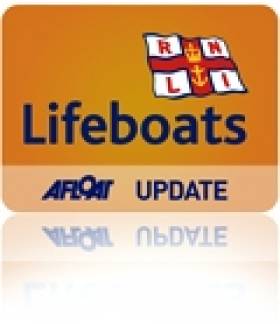Displaying items by tag: Medivac
Wicklow Lifeboat In Medivac From Survey Vessel
#RNLI - Wicklow RNLI carried out a medical evacuation of an unwell man from a survey vessel off the Wicklow coast in the early hours of yesterday morning (2 September).
The alarm was raised after the man was suspected to have been overcome with fumes on a survey vessel working near the Codling Buoy. The all-weather lifeboat launched at 2.45am and was alongside the survey vessel at 3.12am.
Conditions in the area at the time were described as moderate sea with wind southwest Force 3.
The casualty was transferred onto the lifeboat by stretcher and as the lifeboat returned to Wicklow, the crew administered first aid and monitored the casualty.
Due to the low tide in the harbour at the time, the casualty was transferred to the inshore lifeboat and landed ashore at 3.50am. He was met on arrival by a waiting ambulance crew who took him to hospital.
Speaking after the call-out, Wicklow RNLI lifeboat operations manager Des Davitt said: "This was a typically professional response by the volunteer crew of Wicklow lifeboat, who launched within seven minutes of being paged."
The all-weather lifeboat crew launched under coxswain Nick Keogh with mechanic Brendan Copeland, Ciaran Doyle, Carol Flahive, Paul Sillery, Graham Fitzgerald and Peter McCann on board. The inshore crew were helm Barry Spencer, Dave O'Leary and Brian Sinnott.
Spanish Fisherman Airlifted To Hospital in Coastguard Medivac
#Coastguard - Galway Bay FM reports that a man was airlifted by the coastguard from a Spanish fishing trawler off the Galway coast last night (5 August).
The Irish Coast Guard's Shannon-based Rescue 115 helicopter was dispatched to the trawler Brierio some 80 nautical miles west of the Irish coast to retrieve the fisherman, who The Irish Times says was experiencing breathing difficulties.
He was taken to Mid-Western Regional Hospital in Limerick for medical attention.































































